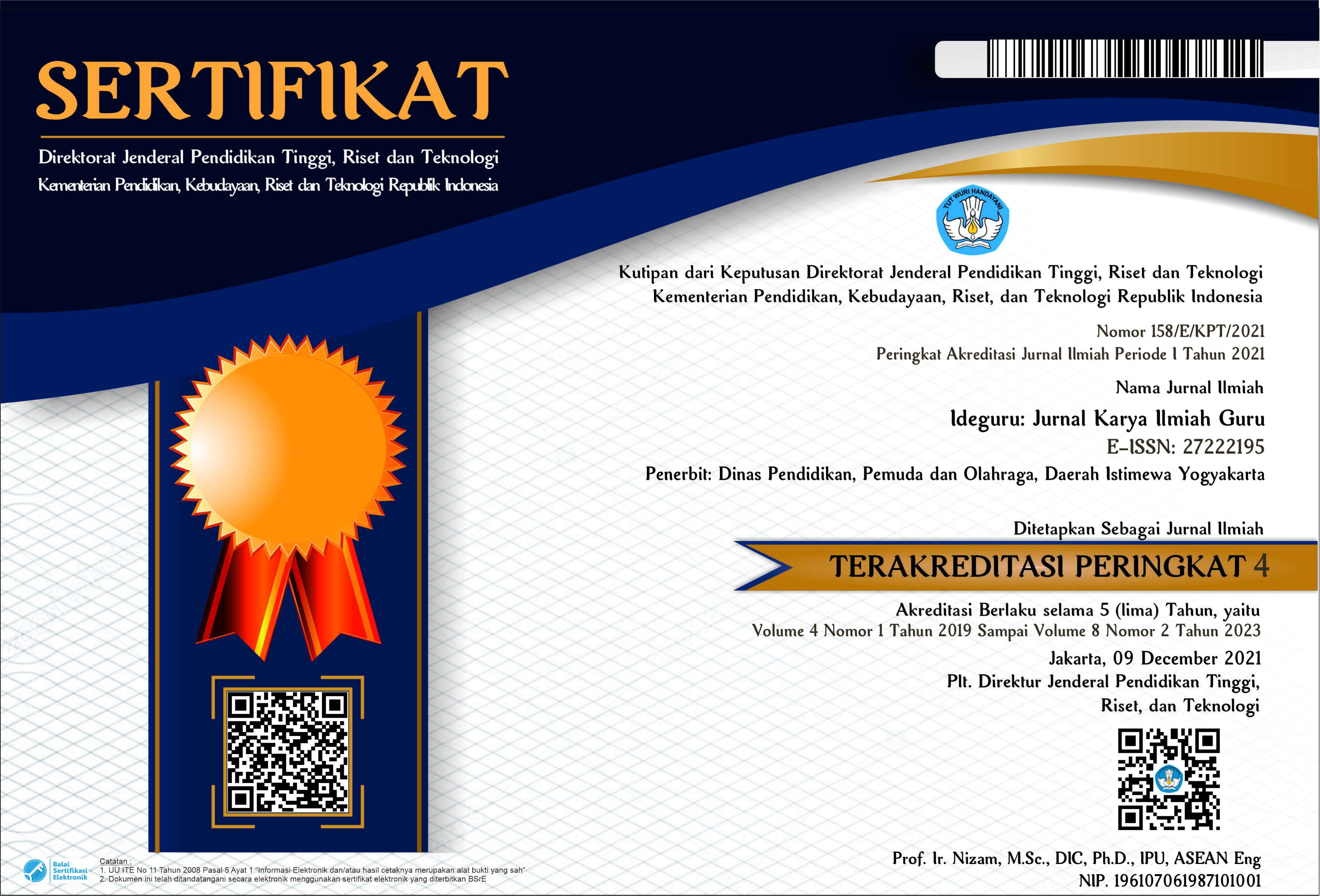Improving Students' Reading Comprehension of Narrative Text Through Problem Based Learning
Abstract
This research was conducted to improve students' reading comprehension of English narrative texts through problem-based learning at SMAN 5 Tasikmalaya Class X in the 2022/2023 academic year. This research is concerned with how using problem-based learning can improve students' reading comprehension of narrative texts. This research uses classroom action research. This is carried out in two cycles. Data can be classified into qualitative and quantitative. Qualitative data was analyzed using observation and interviews. Quantitative data was analyzed using students' pretest and posttest scores. Based on qualitative data, this research found that the use of problem-based learning can effectively improve students' reading comprehension. Students can obtain information from the text well. The reading text provided can make students feel interested and can improve their ability to analyze the text. As a result, they perform better understanding. The findings of this research are also supported by the results of the average student reading comprehension score which increased well from 68 in cycle I to 80 in cycle II. In short, the use of problem-based learning can improve students' reading comprehension of narrative texts.
PDF Downloads
Copyright (c) 2024 Rianti Rianti, Mira Yuniati, Soni T Tandiana, Ipah Muzdalipah, Yusup Supriyono

This work is licensed under a Creative Commons Attribution 4.0 International License.

 DOI:
DOI:














